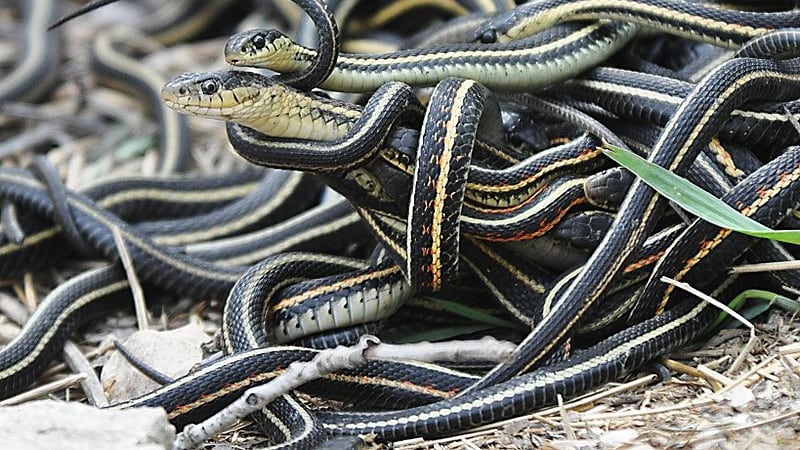When I was a kid in 1970s Portland, every board we turned over revealed a few garter snakes, if not a full-on snake orgy. Now they seem to be all but eradicated. I don't see any well-to-do out-of-state hipster snakes replacing them—where did they go?—Thomas S.
My immediate suspicion, Thomas, has to do with the fact that, today, Portland is a gleaming steel-and-glass metropolis, while in the 1970s it was a wild-and-woolly frontier town where old ladies chased wild bison off their porch with a broom.
But no one wants to read a column by Dr. Immediate Suspicion, so I consulted Oregon State University biology professor and reptile expert Robert Mason. He reports that, in the grand scheme of things, garter snakes are doing fine. But it's true they're probably less prevalent in Portland than they were 40 years ago.
If you're in a hot-take-y mood (or, more importantly, if I am), we could blame the snakes' local decline on the late Oregon Gov. Tom McCall, who championed the 1970s land-use legislation that created Portland's urban growth boundary.
As all good city-planning wonks know, urban growth boundaries are designed to keep Oregon cities from sprawling willy-nilly into the countryside, the way some other Western U.S. cities (cough, Los Angeles, cough) have done.
Such pro-density policies do, however, incentivize us to develop all those vacant lots, unpaved areas, and other little pockets of undeveloped, snake-habitat-suitable land that used to be scattered throughout the city, often accompanied by that understatement-of-the-year traffic sign, "Roadway Not Improved."
But you can create your own snake habitat! Garter snakes are great to have on your property—they eat lots of garden pests, and do a better job of controlling slugs than Corry's Slug and Snail Death (though, admittedly, without the thrill of owning a box of something whose product category is "Death").
Mason says that an old, rusty sheet of corrugated metal roofing (or, if you don't have that, a sheet of plywood) left in a wild corner of your yard provides a great habitat for garter snakes—it may take a summer or two, but they'll find it.

